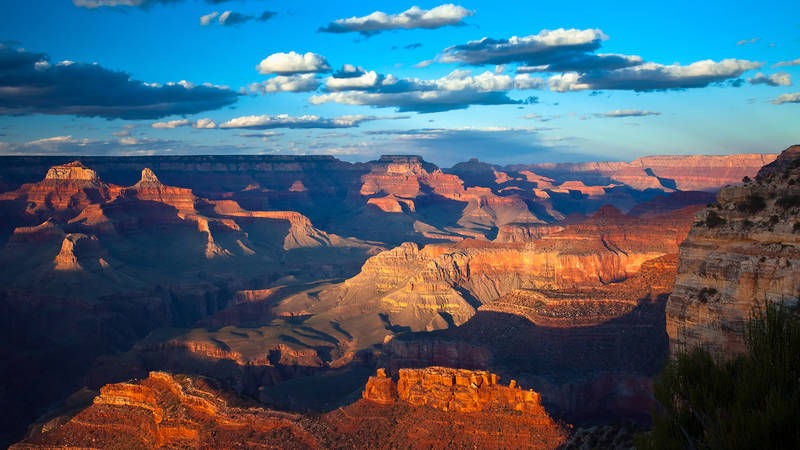Every year, the Park Service releases its official statistics on visitation at national park sites around the country. How does the agency come up with these numbers? With vehicle multipliers, regression formulas, and other unusual procedures, the answer is anything but simple.
The National Park Service recently announced that in 2015 national parks totaled 307,247,252 “recreation visits,” surpassing the previous all-time high by nearly 5 percent.
Despite the appearance of precision, the visitation total is in large part the result of estimates and calculations. That’s because counting visits to parks is really difficult. It involves collecting nearly 10,000 data points from automatic traffic counters, ferry tickets, flyover counts, and yes, some park employees actually manually counting people. Data can take a while to tally, and elaborate formulas fill in the blanks.
“Everything we do is an estimate,” said Pamela Ziesler, the Park Service’s public use statistics coordinator. “I know it looks like a real hard number, like we counted every person exactly, but that cannot be done.”
Recreational Funerals?
The urge to count visitors dates back to 1904, a full dozen years before the creation of the Park Service, when national parks recorded a little more than 120,000 so-called “recreation visits.” Recreation visits are defined primarily by what they’re not: They’re not visits by government employees, commuters, people visiting parks on business, or those who live within a park’s boundaries. Predictably, they include people paddling down the Buffalo National River, climbing Denali, or wandering Gettysburg’s battlefield; they would also include mourners attending a funeral at Andersonville National Cemetery.

Visits to National Parks in 2015 Top 300 Million for the First Time
National parks saw their highest visitation ever in 2015, with more than 307 million recreational visits. This marks a nearly 5% increase from 2014.
See more ›After some fits and starts, visits to national parks have been climbing fairly steadily, hitting the million mark in 1920, 100 million in 1963, and 200 million in 1976. Historically speaking, a record-breaking year is the norm rather than the exception, but more recently, the numbers had been stagnating—until 2014, when visits were the highest-ever for the first time in nearly three decades.
The most-visited park sites are not necessarily the ones you’d expect. While Great Smoky Mountains and Grand Canyon National Parks both crack the top 10, the rest are urban sites, parkways, and recreation areas.
Planning for Bathrooms
Visit statistics aren’t just an excuse for celebratory press releases. Gateway communities use them for their own projections, and transportation authorities include parks’ traffic data in their highway management programs. Visit numbers are a key input in the Park Service’s own studies of the parks’ economic impact on neighboring areas, and the agency relies on visitor statistics to allocate funding and staff to individual park projects like new visitor centers or additional restrooms.
“You don’t want to under-plan” for these kinds of facilities, Ziesler said.
The vast majority of units in the Park System report their annual visits, but a few don’t because they’re not open to visitors, don’t have staff on site, or are supervised by another entity, such as Poverty Point National Monument, which is managed by the state of Louisiana. For those that do report, there are about as many different ways to count visits as there are park sites. Some counting procedures are pretty straightforward—Washington Monument just counts the number of people who ride the elevator in the monument—but others are incredibly complex.

The 10 Least-Visited Places in the Park System
Take a peek at these underappreciated national gems where only a handful of adventurers go.
See more ›For example, some park sites count vehicles instead of people and multiply the totals by a “persons-per-vehicle” ratio to estimate the number of visitors coming through. When some vehicles enter parks for non-recreational purposes, this further complicates the math. Consider these partial counting instructions (lightly edited for clarity) for Catoctin Mountain Park, which encompasses presidential retreat Camp David, whose visitors are not deemed recreational:
“The adjusted traffic counts above are reduced by the number of non-reportable vehicles and Camp David vehicles. The reduced traffic count is multiplied by the persons-per-vehicle (PPV) multiplier of 3.5. If the sum of the traffic counts is less than the non-reportable and Camp David vehicles the traffic counts are summed and divided by 4 and then multiplied by the PPV multiplier of 3.5.”
Got that?
How Many People in a Kayak?
If that wasn’t complicated enough, persons-per-vehicle multipliers often vary based on the season (on the assumption that cars are more likely to be full of children in the summer, for instance) or the section of a park or a parkway. Blue Ridge Parkway, which tops the visitation list with more than 15 million visits, has a number of automatic traffic counters along its 469 miles, but not at every entry point. Park officials use “regression formulas” to estimate the number of vehicles that enter the parkway at intermediate mileposts where exact counts aren’t available. For example, from December to April the monthly vehicle count at Milepost 16 is equal to 0.451 times the number of vehicles at the northern entrance plus 1,994; traffic counts are further adjusted for commuters and government vehicles.
Vehicle estimates are not limited to cars either. Voyageurs National Park staff conduct flights to count canoes, kayaks, sailboats, and houseboats, and apply different occupancy ratios to each (two per kayak, for those wondering).
Visits to the Snack Bar
The most challenging parks are the urban ones, however. Take the National Mall in Washington, D.C. The Mall itself counts as one unit, and so do individual memorials. There are no gates or fences, and most visitors arrive there on foot.
“You figure somebody could skip off the sidewalk and be in a park,” Ziesler said.
Stay On Top of News
Our email newsletter shares the latest on parks.
So for each memorial, rangers have to actually walk around and count the number of visitors. They do it in 15-minute increments six times a day, average the results, and extrapolate them to a full 16-hour day. If you’ve been to the Lincoln Memorial on a pleasant spring day, you know it can be swarming with humanity.
“They have a difficult job,” Ziesler said of the counting rangers, “and they’re surprisingly consistent with their numbers.”
Estimates of the Mall and surrounding areas are obtained by tallying the number of people visiting snack bars or gift shops, attending demonstrations, or playing sets at a nearby tennis club. If you hit all the Mall’s memorials and buy some sustenance and souvenirs along the way, you could rack up a dozen “visits” in a single day. Still, Ziesler thinks the Park Service is low-balling the Mall’s visitation numbers.
“I have a feeling we’re missing counts in the order of millions out there,” she said.
Jeffrey Olson, a Park Service spokesman on visitation trends, said activities to celebrate the agency’s centennial and programs to bring children into parks could further boost statistics, boding well for another record year.
“I think the message is pretty clear,” he said. Regardless of the actual figure, national parks are “very, very popular.”
About the author
-
 Nicolas Brulliard Senior Editor
Nicolas Brulliard Senior EditorNicolas is a journalist and former geologist who joined NPCA in November 2015. He serves as senior editor of National Parks magazine.